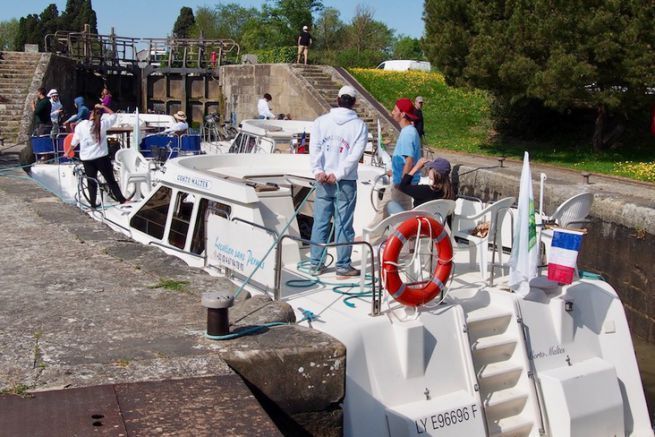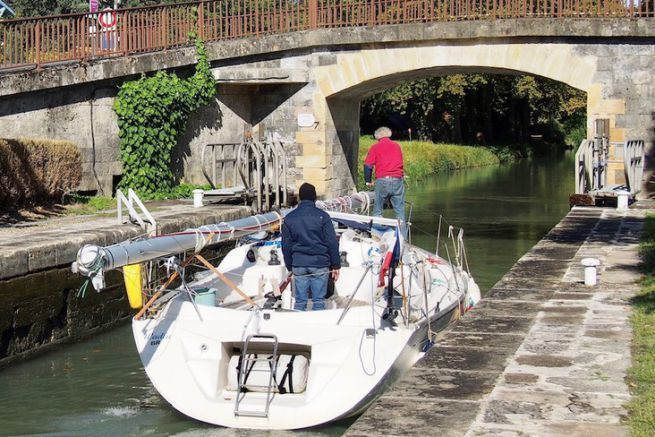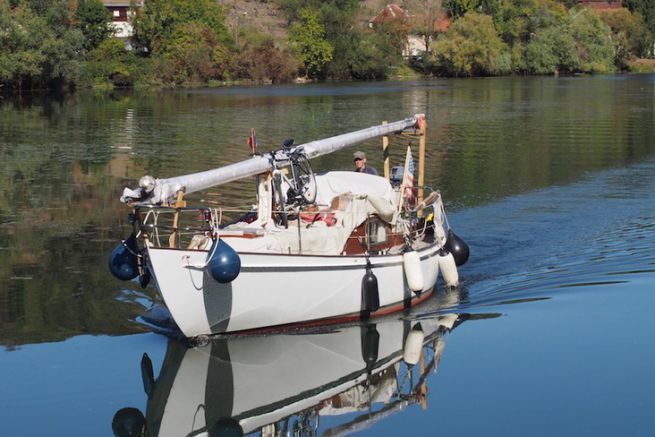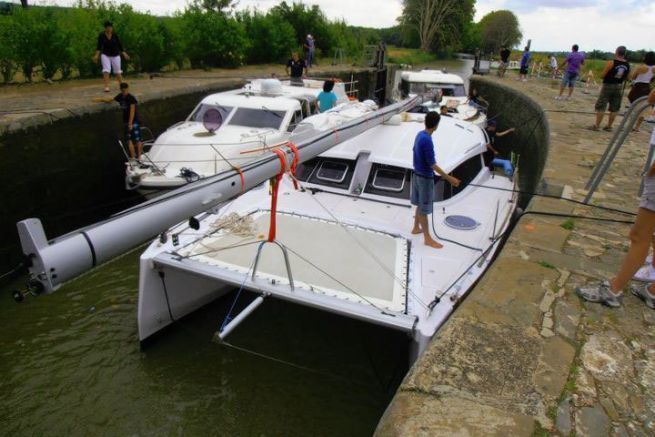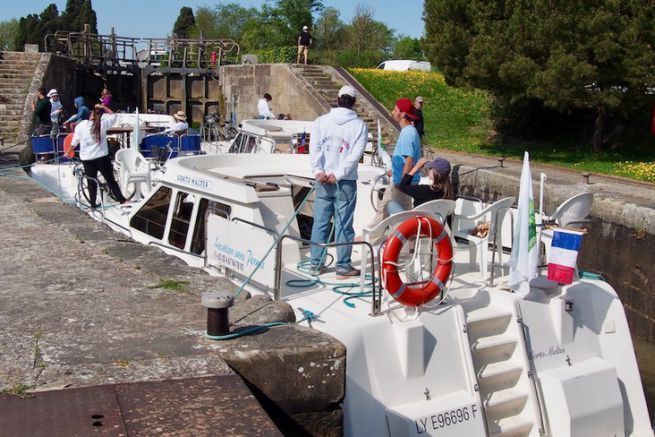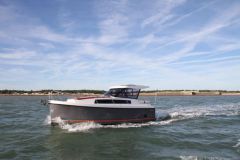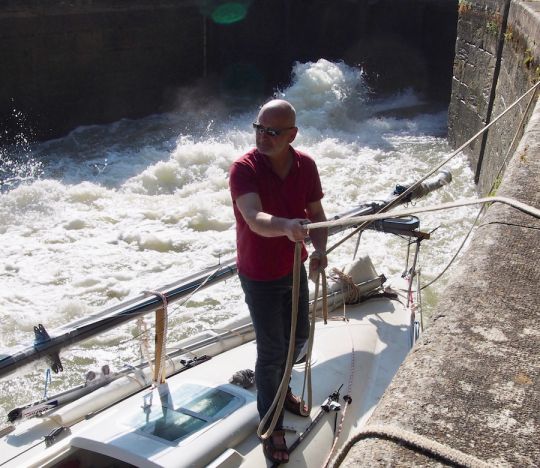
Round locks
On the Canal du Midi, the lock walls are curved to better resist water pressure. The mast of a dismasted sailboat, if it's long, risks bearing on the front wall of the fenders. It's up to you to take this into account and adjust your mooring lines accordingly.
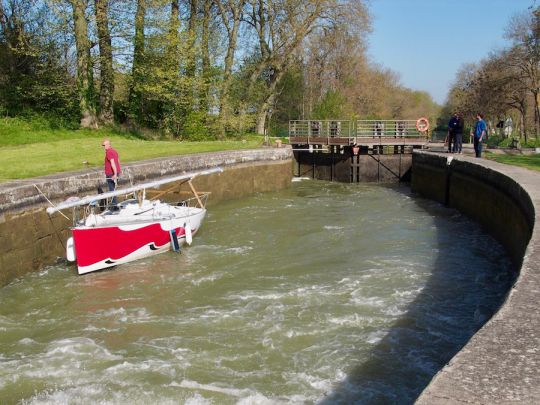
Overhangs
Lock gates are made up of wooden or metal structures under which, if you're not careful, you run the risk of jamming the end of the mast or balcony. Imagine the consequences! This risk increases when there are several boats passing through the lock. During the maneuver, keep a close eye on everything that might happen, so you can act without waiting until it's too late.
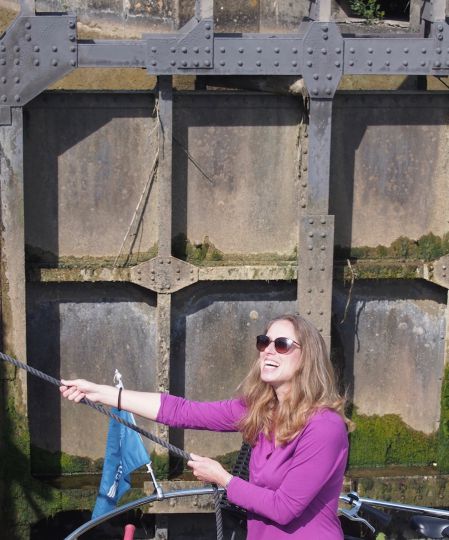
With blade and eye
Mooring lines must be clear to ensure a smooth descent, but sometimes stones in the masonry can become disjointed and form a crack in which a rope can get caught. Suspended by one end, the boat could find itself in a very unfortunate situation! Be vigilant, keep an eye on everything and... keep a knife handy!
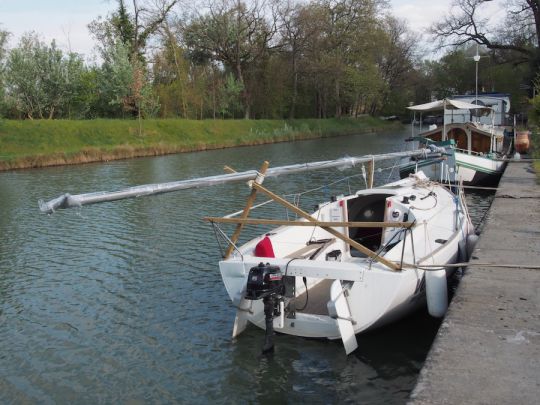
The vicious invert
The solid masonry abutment of the upstream gates is often prominent, especially on the Canal du Midi, where it encroaches 2 to 3 meters onto the lock chamber. Painted lines mark the boundary to avoid placing a propeller or rudder on it when the water goes down. In any case, try to keep a respectful distance from the upstream gates in a downstream lock.
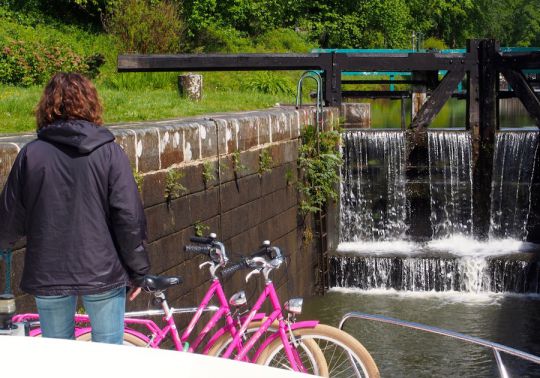
It's bubbling over!
They may look impressive, but they're not a problem as long as you keep the mooring lines tight. The gates are circumflex-accented. As a result, the flow from each gate is not parallel to the basin, but slants towards the opposite wall, where it ricochets off it. Opening the gate on the bank where the boat is moored therefore tends to press the boat against the bajoyer, while opening the other gate tends to pull it away from the bajoyer. A good lock-keeper will give priority to opening the first valve, whereas automated systems are not so considerate...
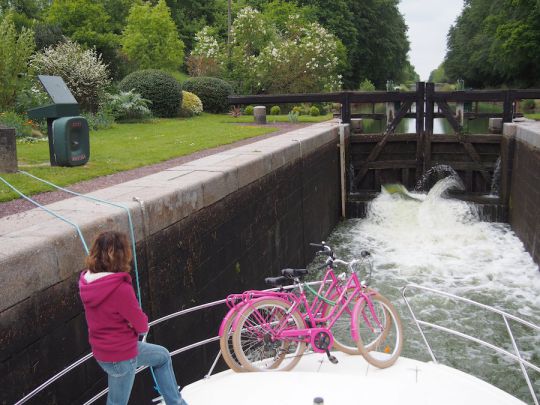
Watch out!
Boat safety is no reason to neglect crew safety. The major risks are slippery ladders, but also getting a limb caught between the wall and the boat while trying to overflow. Beware: a lock is the worst place to fall into the water, especially between the wall and the boat! The eddies force the planking into place, and the unfortunate person is likely to have a very bad time! Automated locks have made lockage safer, but there are still some manual locks. In this case, be careful with the winch cranks, which can hit an arm, wrist or even a nose if the anti-return pawl is not engaged.
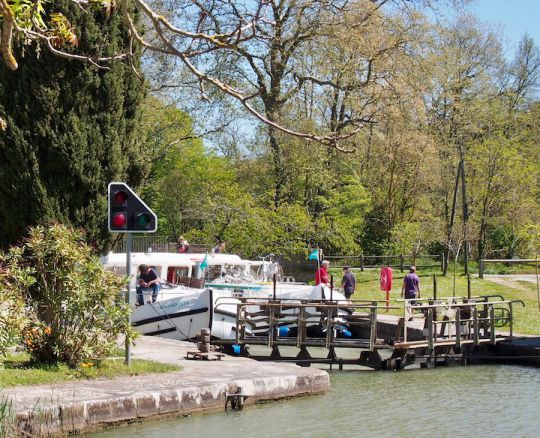
The danger is the others...
With these precautions in mind, you'll have every reason to remain calm, and the locks will follow one another without difficulty. There is, however, one type of skipper you can't trust: the captain of a charter boat, i.e. someone who boards a charter boat and sails with only a cursory initiation. Some combine a total lack of practical sense with a blatant disregard for other users. Friction is most likely to occur on busy days, when the lock keeper is cramming the lock to limit the number of manoeuvres. Let the excited and the awkward through. By entering last, you'll have better control of the maneuver.

 /
/ 